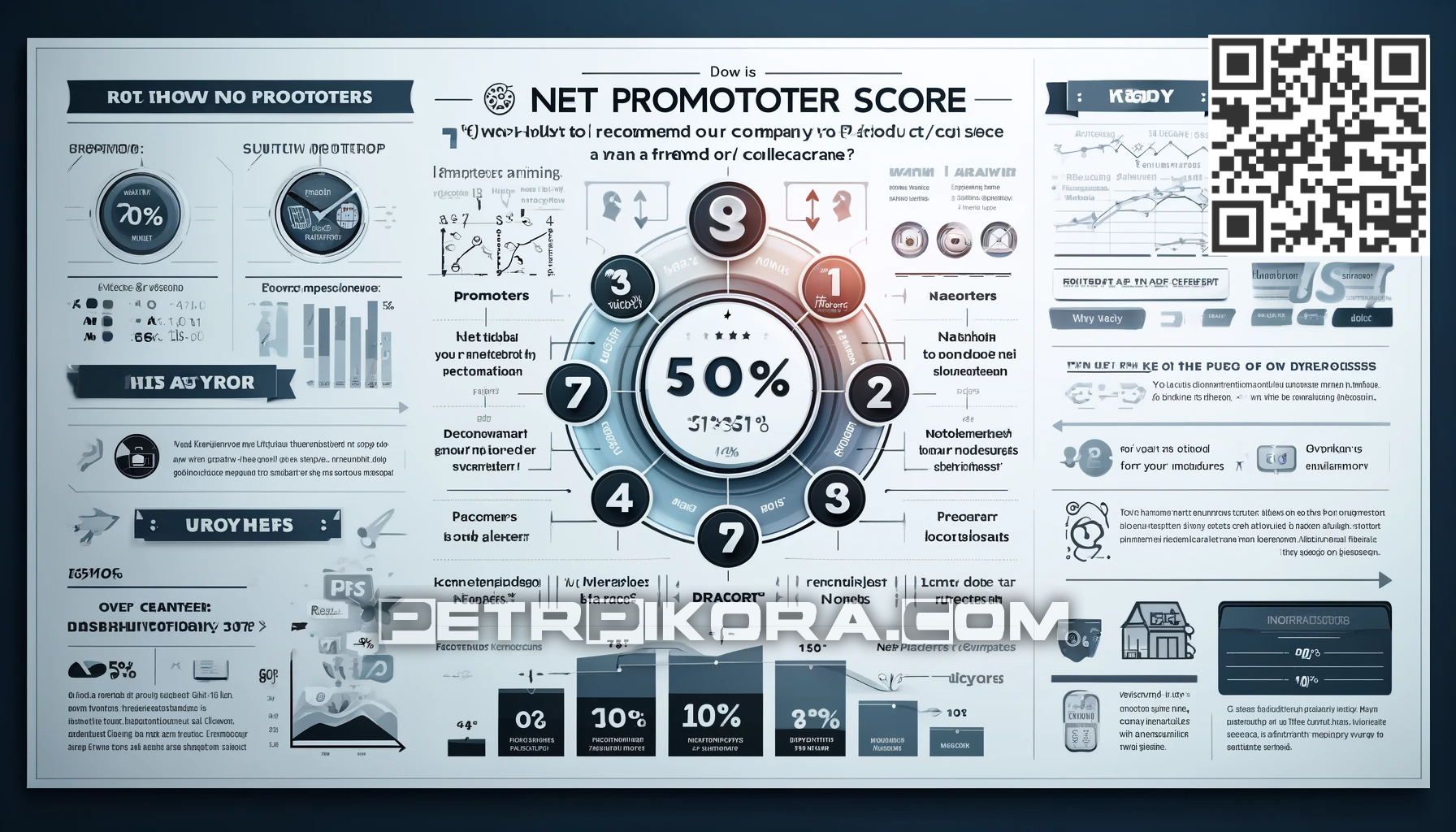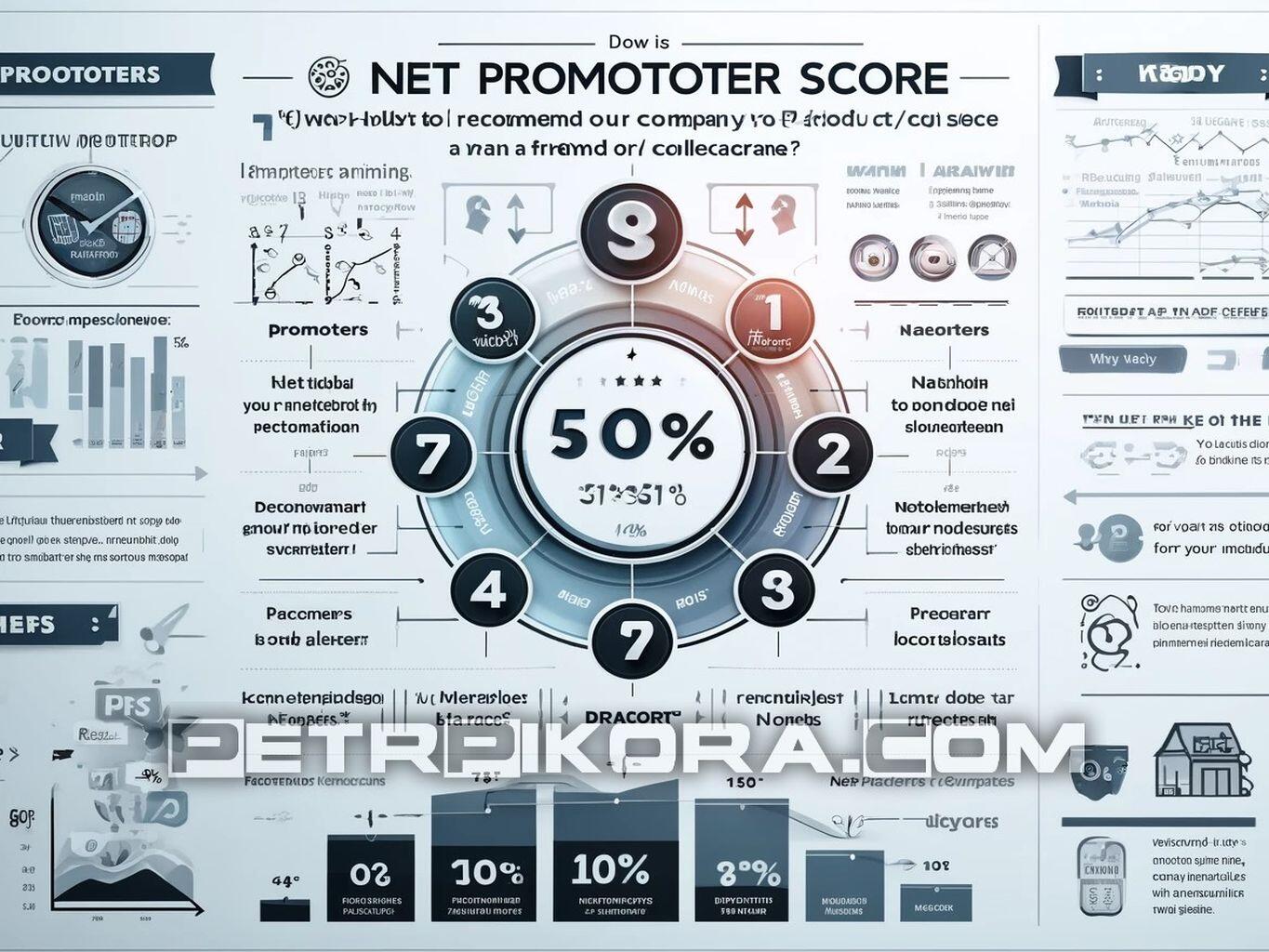
Net Promoter Score (NPS)
Understanding the Basics of Net Promoter Score (NPS)
Copied
Understanding the Basics of Net Promoter Score (NPS)Net Promoter Score (NPS) is a powerful tool for measuring customer loyalty and satisfaction. By asking a simple question, "How likely are you to recommend our product/service to a friend or colleague?", businesses can gain valuable insights into their customers' perceptions. With NPS, companies can identify areas for improvement and track their progress over time, ultimately leading to increased customer retention and growth.
Net Promoter Score (NPS) is a powerful tool for measuring customer loyalty and satisfaction. By asking a simple question, "How likely are you to recommend our product/service to a friend or colleague?", businesses can gain valuable insights into their customers' perceptions. With NPS, companies can identify areas for improvement and track their progress over time, ultimately leading to increased customer retention and growth.
Net Promoter Score (NPS) is a powerful tool for measuring customer loyalty and satisfaction. By asking a simple question, „How likely are you to recommend our product/service to a friend or colleague?“, businesses can gain valuable insights into their customers‘ perceptions. With NPS, companies can identify areas for improvement and track their progress over time, ultimately leading to increased customer retention and growth.
Net Promoter Score (NPS) is a powerful tool that measures customer loyalty and satisfaction. It is a metric that helps businesses understand how likely their customers are to recommend their products or services to others. NPS is calculated by asking customers a simple question: „On a scale of 0-10, how likely are you to recommend our company to a friend or colleague?“ Based on their responses, customers are categorized into three groups: promoters, passives, and detractors. Promoters are highly satisfied customers who are likely to recommend the company, while detractors are dissatisfied customers who are likely to spread negative word-of-mouth. By understanding NPS, businesses can identify areas for improvement and focus on creating a positive customer experience to drive growth and success.
How to Calculate and Interpret Your NPS Score
Copied
How to Calculate and Interpret Your NPS ScoreDiscover the power of the Net Promoter Score (NPS) and learn how to accurately calculate and interpret your score. Gain valuable insights into customer loyalty and satisfaction to drive business growth. Unlock the potential of NPS and elevate your company's success.
Discover the power of the Net Promoter Score (NPS) and learn how to accurately calculate and interpret your score. Gain valuable insights into customer loyalty and satisfaction to drive business growth. Unlock the potential of NPS and elevate your company's success.
Discover the power of the Net Promoter Score (NPS) and learn how to accurately calculate and interpret your score. Gain valuable insights into customer loyalty and satisfaction to drive business growth. Unlock the potential of NPS and elevate your company’s success.
Calculating and interpreting your Net Promoter Score (NPS) is a crucial step in understanding your customers‘ loyalty and satisfaction. NPS is a metric that measures the likelihood of customers recommending your brand to others. It is calculated by subtracting the percentage of detractors (customers who would not recommend your brand) from the percentage of promoters (customers who would highly recommend your brand). The resulting score can range from -100 to 100, with a higher score indicating a higher level of customer satisfaction and loyalty. Interpreting your NPS score can provide valuable insights into your customers‘ perceptions of your brand and help guide your business strategies. By following these steps, you can accurately calculate and interpret your NPS score to improve your overall customer experience. Understanding your customers‘ loyalty and satisfaction is essential for any business, and one way to measure this is through your Net Promoter Score (NPS). This metric evaluates the likelihood of customers recommending your brand to others and is a valuable tool for understanding your brand’s reputation. To calculate your NPS, simply subtract the percentage of detractors from the percentage of promoters. This will give you a score between -100 and 100, with a higher score indicating a higher level of customer satisfaction and loyalty. By interpreting your NPS score, you can gain valuable insights into your customers‘ perceptions of your brand and use this information to inform your business strategies. Follow these steps to accurately calculate and interpret your NPS score, and take the necessary steps to improve your overall customer experience.
The Importance of NPS in Measuring Customer Loyalty
Copied
The Importance of NPS in Measuring Customer LoyaltyNPS, or Net Promoter Score, is a crucial tool for businesses to gauge customer loyalty. By asking a simple question - "How likely are you to recommend our product/service to a friend or colleague?" - NPS provides valuable insights into customer satisfaction and retention. With its easy-to-understand scoring system, NPS helps companies identify areas for improvement and build stronger relationships with their customers. In today's competitive market, understanding and measuring customer loyalty through NPS is essential for long-term success.
NPS, or Net Promoter Score, is a crucial tool for businesses to gauge customer loyalty. By asking a simple question - "How likely are you to recommend our product/service to a friend or colleague?" - NPS provides valuable insights into customer satisfaction and retention. With its easy-to-understand scoring system, NPS helps companies identify areas for improvement and build stronger relationships with their customers. In today's competitive market, understanding and measuring customer loyalty through NPS is essential for long-term success.
NPS, or Net Promoter Score, is a crucial tool for businesses to gauge customer loyalty. By asking a simple question – „How likely are you to recommend our product/service to a friend or colleague?“ – NPS provides valuable insights into customer satisfaction and retention. With its easy-to-understand scoring system, NPS helps companies identify areas for improvement and build stronger relationships with their customers. In today’s competitive market, understanding and measuring customer loyalty through NPS is essential for long-term success.
Customer loyalty is a crucial aspect for any business to thrive in today’s competitive market. In order to gauge the level of loyalty among customers, many companies rely on the Net Promoter Score (NPS) metric. NPS is a powerful tool that measures the likelihood of customers to recommend a company’s products or services to others. This metric not only provides valuable insights into customer satisfaction, but also serves as a key indicator of a company’s overall performance. In this article, we will delve into the significance of NPS in measuring customer loyalty and how it can help businesses improve their customer retention strategies.
Using NPS to Drive Business Growth and Retention
Copied
Using NPS to Drive Business Growth and RetentionNPS, or Net Promoter Score, is a powerful tool for driving business growth and retaining customers. By measuring customer satisfaction and loyalty, businesses can identify areas for improvement and create strategies to increase customer retention. With NPS, companies can gain valuable insights and make data-driven decisions to boost their bottom line. Don't miss out on the opportunity to use NPS to drive your business forward.
NPS, or Net Promoter Score, is a powerful tool for driving business growth and retaining customers. By measuring customer satisfaction and loyalty, businesses can identify areas for improvement and create strategies to increase customer retention. With NPS, companies can gain valuable insights and make data-driven decisions to boost their bottom line. Don't miss out on the opportunity to use NPS to drive your business forward.
NPS, or Net Promoter Score, is a powerful tool for driving business growth and retaining customers. By measuring customer satisfaction and loyalty, businesses can identify areas for improvement and create strategies to increase customer retention. With NPS, companies can gain valuable insights and make data-driven decisions to boost their bottom line. Don’t miss out on the opportunity to use NPS to drive your business forward.
The Net Promoter Score (NPS) has become a powerful tool for businesses to drive growth and retain customers. This metric, which measures the likelihood of customers to recommend a company to others, has proven to be a valuable indicator of customer satisfaction and loyalty. By utilizing NPS, businesses can gain valuable insights into their customers‘ experiences and use this information to improve their products and services. This, in turn, can lead to increased customer retention and ultimately drive business growth. With the ever-increasing competition in the market, NPS has become a crucial factor in determining a company’s success. By prioritizing customer satisfaction and utilizing NPS, businesses can not only attract new customers but also retain their existing ones, leading to sustainable growth and success.
Common Mistakes to Avoid When Implementing NPS
Copied
Common Mistakes to Avoid When Implementing NPSWhen it comes to implementing NPS, there are a few common mistakes that businesses should avoid. One of the biggest mistakes is not properly training employees on how to use the system, leading to inaccurate data. Another mistake is not regularly reviewing and analyzing the data collected, which can result in missed opportunities for improvement. Additionally, businesses should avoid solely relying on NPS as the sole measure of customer satisfaction, as it may not provide a complete picture. By avoiding these mistakes, businesses can effectively utilize NPS to enhance their customer experience and drive growth.
When it comes to implementing NPS, there are a few common mistakes that businesses should avoid. One of the biggest mistakes is not properly training employees on how to use the system, leading to inaccurate data. Another mistake is not regularly reviewing and analyzing the data collected, which can result in missed opportunities for improvement. Additionally, businesses should avoid solely relying on NPS as the sole measure of customer satisfaction, as it may not provide a complete picture. By avoiding these mistakes, businesses can effectively utilize NPS to enhance their customer experience and drive growth.
When it comes to implementing NPS, there are a few common mistakes that businesses should avoid. One of the biggest mistakes is not properly training employees on how to use the system, leading to inaccurate data. Another mistake is not regularly reviewing and analyzing the data collected, which can result in missed opportunities for improvement. Additionally, businesses should avoid solely relying on NPS as the sole measure of customer satisfaction, as it may not provide a complete picture. By avoiding these mistakes, businesses can effectively utilize NPS to enhance their customer experience and drive growth.
When it comes to implementing the Net Promoter Score (NPS) system, there are a few common mistakes that businesses should avoid. These mistakes can hinder the effectiveness of the NPS and prevent companies from truly understanding their customers‘ loyalty and satisfaction levels. One of the most common mistakes is solely focusing on the numerical score and not taking the time to understand the underlying reasons behind it. This can lead to a superficial understanding of customer satisfaction and hinder the ability to make meaningful improvements. In the world of customer feedback, the Net Promoter Score (NPS) system has become a popular tool for measuring loyalty and satisfaction. However, many businesses fall into the trap of making common mistakes that can hinder the success of their NPS implementation. One of these mistakes is solely relying on the numerical score and neglecting to dig deeper into the underlying factors that contribute to it. This can result in a shallow understanding of customer satisfaction and hinder the ability to make impactful changes.
The Role of NPS in Customer Experience Management
Copied
The Role of NPS in Customer Experience ManagementNPS, or Net Promoter Score, plays a crucial role in effectively managing customer experience. By measuring customer loyalty and satisfaction, NPS helps businesses identify areas for improvement and build stronger relationships with their customers. With its simple yet powerful methodology, NPS is a valuable tool for enhancing the overall customer experience.
NPS, or Net Promoter Score, plays a crucial role in effectively managing customer experience. By measuring customer loyalty and satisfaction, NPS helps businesses identify areas for improvement and build stronger relationships with their customers. With its simple yet powerful methodology, NPS is a valuable tool for enhancing the overall customer experience.
NPS, or Net Promoter Score, plays a crucial role in effectively managing customer experience. By measuring customer loyalty and satisfaction, NPS helps businesses identify areas for improvement and build stronger relationships with their customers. With its simple yet powerful methodology, NPS is a valuable tool for enhancing the overall customer experience.
Customer experience management (CEM) has become a crucial aspect for businesses in today’s competitive market. It involves understanding and improving the overall experience of customers with a brand or product. One tool that has gained significant importance in CEM is the Net Promoter Score (NPS). NPS is a metric that measures the likelihood of customers to recommend a brand to others. It has become a key indicator for businesses to assess their customer satisfaction and loyalty. In this article, we will delve into the role of NPS in CEM and how it can help businesses enhance their customer experience.
NPS vs. Other Customer Satisfaction Metrics: Which is Best?
Copied
NPS vs. Other Customer Satisfaction Metrics: Which is Best?When it comes to measuring customer satisfaction, there are various metrics available, but one stands out above the rest: Net Promoter Score (NPS). While other metrics may provide valuable insights, NPS has proven to be the most effective in predicting customer loyalty and driving business growth. Let's take a closer look at why NPS reigns supreme in the world of customer satisfaction metrics.
When it comes to measuring customer satisfaction, there are various metrics available, but one stands out above the rest: Net Promoter Score (NPS). While other metrics may provide valuable insights, NPS has proven to be the most effective in predicting customer loyalty and driving business growth. Let's take a closer look at why NPS reigns supreme in the world of customer satisfaction metrics.
When it comes to measuring customer satisfaction, there are various metrics available, but one stands out above the rest: Net Promoter Score (NPS). While other metrics may provide valuable insights, NPS has proven to be the most effective in predicting customer loyalty and driving business growth. Let’s take a closer look at why NPS reigns supreme in the world of customer satisfaction metrics.
When it comes to measuring customer satisfaction, there are various metrics that businesses can use. However, one metric that has gained significant popularity in recent years is the Net Promoter Score (NPS). This metric, developed by Fred Reichheld, measures the likelihood of customers to recommend a company to others. While NPS has been widely adopted by many organizations, there are still debates on whether it is the best metric to use. In this article, we will explore the pros and cons of NPS compared to other customer satisfaction metrics, and determine which one is truly the best for businesses to use.
How to Use NPS to Identify and Address Customer Pain Points
Copied
How to Use NPS to Identify and Address Customer Pain PointsDiscovering and resolving customer pain points is crucial for any business. One effective way to do this is by utilizing Net Promoter Score (NPS). By gathering feedback from customers, businesses can identify areas of improvement and take action to address these pain points. Here's how to effectively use NPS to enhance customer satisfaction and loyalty.
Discovering and resolving customer pain points is crucial for any business. One effective way to do this is by utilizing Net Promoter Score (NPS). By gathering feedback from customers, businesses can identify areas of improvement and take action to address these pain points. Here's how to effectively use NPS to enhance customer satisfaction and loyalty.
Discovering and resolving customer pain points is crucial for any business. One effective way to do this is by utilizing Net Promoter Score (NPS). By gathering feedback from customers, businesses can identify areas of improvement and take action to address these pain points. Here’s how to effectively use NPS to enhance customer satisfaction and loyalty.
NPS, or Net Promoter Score, is a powerful tool that can help businesses identify and address customer pain points. By measuring customer satisfaction and loyalty, NPS provides valuable insights into areas where improvements can be made. Here’s how you can effectively use NPS to identify and address customer pain points in your business. Firstly, it’s important to understand how NPS works. Customers are asked to rate their likelihood of recommending your business on a scale of 0-10. Those who give a score of 9 or 10 are considered promoters, while those who give a score of 6 or below are considered detractors. The NPS is then calculated by subtracting the percentage of detractors from the percentage of promoters. Once you have your NPS score, it’s time to dig deeper and understand the reasons behind it. This can be done through follow-up surveys or by analyzing customer feedback. Look for patterns and common themes in the responses of detractors to identify the pain points that are causing them to give a low score. Next, prioritize the pain points based on their impact on customer satisfaction and loyalty. This will help you focus on the most critical issues first. It’s also important to involve all departments in this process, as customer pain points can arise from various touchpoints in the customer journey. Now that you have identified the pain points, it’s time to take action. This could involve making changes to your products or services, improving customer service processes, or addressing any other issues that are causing dissatisfaction. It’s crucial to communicate these changes to your customers and show them that their feedback has been heard and acted upon. Finally, continue to monitor your NPS score and track the impact of the changes you have made. This will help you determine if the pain points have been effectively addressed and if there are any new issues that need to be addressed. In conclusion, NPS is a valuable tool for businesses to identify and address customer pain points. By understanding how it works and following the steps outlined above, you can use NPS to improve customer satisfaction and loyalty, ultimately leading to business growth and success.
The Impact of NPS on Brand Reputation and Customer Advocacy
Copied
The Impact of NPS on Brand Reputation and Customer AdvocacyThe Net Promoter Score (NPS) has a significant influence on a brand's reputation and the level of customer advocacy. By measuring customer satisfaction and loyalty, NPS can help businesses improve their overall image and foster a loyal customer base.
The Net Promoter Score (NPS) has a significant influence on a brand's reputation and the level of customer advocacy. By measuring customer satisfaction and loyalty, NPS can help businesses improve their overall image and foster a loyal customer base.
The Net Promoter Score (NPS) has a significant influence on a brand’s reputation and the level of customer advocacy. By measuring customer satisfaction and loyalty, NPS can help businesses improve their overall image and foster a loyal customer base.
In today’s competitive market, a brand’s reputation and customer advocacy are crucial factors for success. One tool that has gained significant attention in recent years for measuring these aspects is the Net Promoter Score (NPS). This metric, developed by Fred Reichheld, measures the likelihood of customers to recommend a brand to others. However, the impact of NPS on brand reputation and customer advocacy is a topic that requires further exploration. In this article, we will delve into the significance of NPS and how it can influence a brand’s reputation and customer advocacy.
Incorporating NPS into Your Overall Business Strategy for Success
Copied
Incorporating NPS into Your Overall Business Strategy for SuccessNPS, or Net Promoter Score, is a powerful tool that can greatly enhance your business strategy and lead to success. By utilizing NPS, you can gain valuable insights into customer satisfaction and loyalty, allowing you to make informed decisions and improve overall performance. Don't overlook the potential of NPS in driving your business towards success.
NPS, or Net Promoter Score, is a powerful tool that can greatly enhance your business strategy and lead to success. By utilizing NPS, you can gain valuable insights into customer satisfaction and loyalty, allowing you to make informed decisions and improve overall performance. Don't overlook the potential of NPS in driving your business towards success.
NPS, or Net Promoter Score, is a powerful tool that can greatly enhance your business strategy and lead to success. By utilizing NPS, you can gain valuable insights into customer satisfaction and loyalty, allowing you to make informed decisions and improve overall performance. Don’t overlook the potential of NPS in driving your business towards success.
Integrating NPS into Your Business Strategy: A Key to Achieving Success As the business landscape becomes increasingly competitive, companies are constantly seeking ways to stand out and achieve success. One effective approach is incorporating Net Promoter Score (NPS) into their overall business strategy. NPS, a customer loyalty metric, measures the likelihood of customers to recommend a company’s products or services to others. By incorporating NPS into their strategy, businesses can gain valuable insights into their customers‘ satisfaction levels and make informed decisions to improve their overall performance. In this article, we will explore the benefits of integrating NPS into your business strategy and how it can lead to long-term success.


















Zanechte komentář